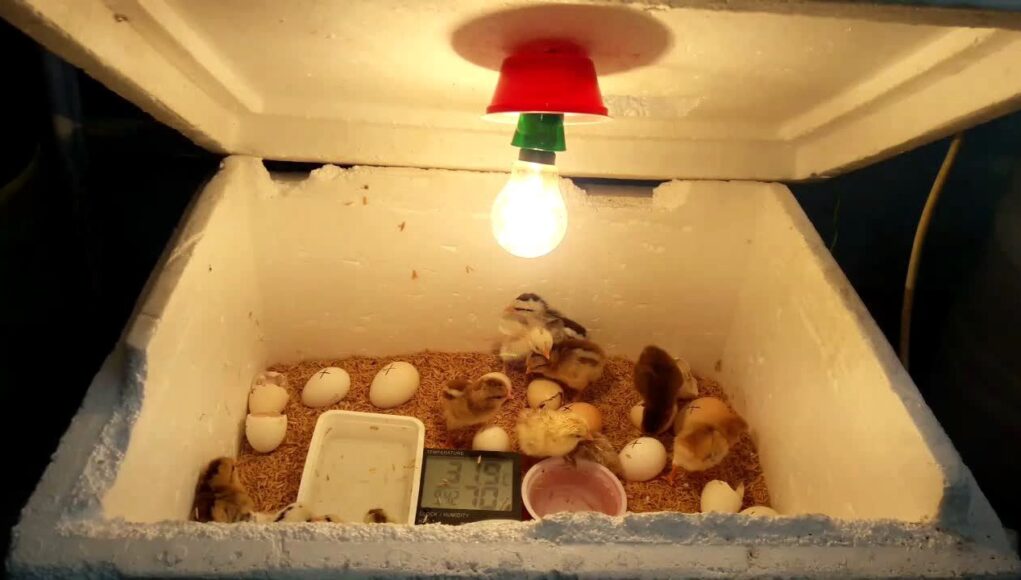Setting up egg trays in an incubator is a crucial step for anyone looking to hatch eggs successfully. Whether you’re a seasoned poultry enthusiast or a beginner, understanding how to set up egg trays in an incubator can significantly impact your hatching results. This guide will walk you through the process, ensuring you have the knowledge to optimize your incubator setup for a successful hatch.

Understanding the Importance of Egg Trays in Incubation
Egg trays play a vital role in the incubation process. They help maintain the eggs’ position, facilitate even temperature distribution, and allow for easy turning. Properly setting up these trays is essential for successful egg incubation. For more on the basics of egg incubation, visit our Beginner’s Guide to Egg Incubation.
Why Correct Setup Matters
Correctly setting up egg trays ensures that each egg receives consistent heat and humidity, which are critical factors in the development of the embryo. Incorrect setup can lead to uneven heating, which can negatively affect hatching rates.
Choosing the Right Egg Trays
Selecting the appropriate egg trays for your incubator is the first step. Consider the size and type of eggs you are incubating, as different trays are designed for various egg sizes. Ensure the trays are compatible with your incubator model to facilitate optimal airflow and temperature control.
Types of Egg Trays
- Universal Trays: Suitable for various egg sizes.
- Specific Trays: Designed for specific egg types, such as chicken, quail, or duck eggs.
Preparing the Incubator
Before placing the egg trays, it is crucial to prepare the incubator. Clean the incubator thoroughly to prevent bacterial contamination. Set the correct temperature and humidity levels according to the type of eggs you are incubating. For detailed guidance on maintaining humidity, check out our Humidity Maintenance Guide.
Temperature and Humidity Settings
For chicken eggs, the ideal temperature is around 99.5F (37.5C), and the humidity should be maintained between 50-55% during incubation. Adjust these settings based on the species of eggs.
Placing the Eggs on Trays
Once the incubator is ready, it’s time to place the eggs on the trays. Arrange the eggs with the pointed end facing downwards to facilitate optimal airflow and embryo development. Ensure there is adequate space between each egg to allow air circulation.
Egg Positioning Tips
- Avoid overcrowding the trays.
- Ensure eggs are stable and not rolling.
Turning the Eggs
Regular turning of the eggs is essential to prevent the embryo from sticking to the shell. This process should be done several times a day, ideally at least three times. For more on egg turning, refer to our article on Egg Turning Frequency.
Automated vs. Manual Turning
Some incubators come with automatic turning features, which can be a time-saver. However, if your incubator requires manual turning, set a schedule to ensure consistency.
Monitoring the Incubation Process
Consistent monitoring of temperature and humidity is crucial throughout the incubation period. Use reliable thermometers and hygrometers to track these parameters. Make adjustments as necessary to maintain optimal conditions.
Handling Temperature Fluctuations
In case of temperature fluctuations, try to stabilize the environment quickly to minimize any adverse effects on the developing embryos.
Preparing for Hatching
As the incubation period nears its end, prepare for the hatching phase. Increase humidity slightly to help soften the eggshells, facilitating easier hatching.
Signs of Hatching
- Peeping sounds from the eggs.
- Visible cracks on the eggshells.
Post-Hatching Care
After the chicks hatch, provide them with a warm, dry environment. Ensure they have access to food and water. For comprehensive care tips, visit our guide on Chick Care Post-Hatching.
Initial Chick Care
Keep the chicks in the incubator until they are dry and fluffy before transferring them to a brooder.
Common Challenges in Egg Incubation
Egg incubation can present several challenges, such as uneven temperature distribution and bacterial contamination. Understanding these challenges and how to address them is key to improving success rates.
Preventing Contamination
Regularly clean the incubator and accessories to prevent bacterial growth. Practice good hygiene when handling eggs.
FAQs
1. How often should I turn the eggs?
Eggs should be turned at least three times a day to prevent the embryo from sticking to the shell.
2. What temperature is ideal for incubating chicken eggs?
The ideal temperature for incubating chicken eggs is 99.5F (37.5C).
3. How long does it take for chicken eggs to hatch?
Chicken eggs typically take 21 days to hatch, but this can vary slightly based on incubation conditions.

Conclusion
Setting up egg trays in an incubator involves careful planning and attention to detail. By following the guidelines outlined in this article, you can enhance your hatching success and enjoy the rewarding experience of raising chicks. For more detailed information on egg care and incubation, consider visiting external resources like The Poultry Site.
This article contains affiliate links. We may earn a commission at no extra cost to you.











